Building of the Day: 222 Livingston Street, Home of the Chandler Piano Company
Brooklyn, one building at a time. Built as a private home during the post–Civil War boom years, this building became famous as the home of the Chandler Piano Company. Name: Originally a row house, then retail/apartments Address: 222 Livingston Street Cross Streets: Hoyt and Bond streets Neighborhood: Downtown Brooklyn Year Built: Probably late 1860s or…
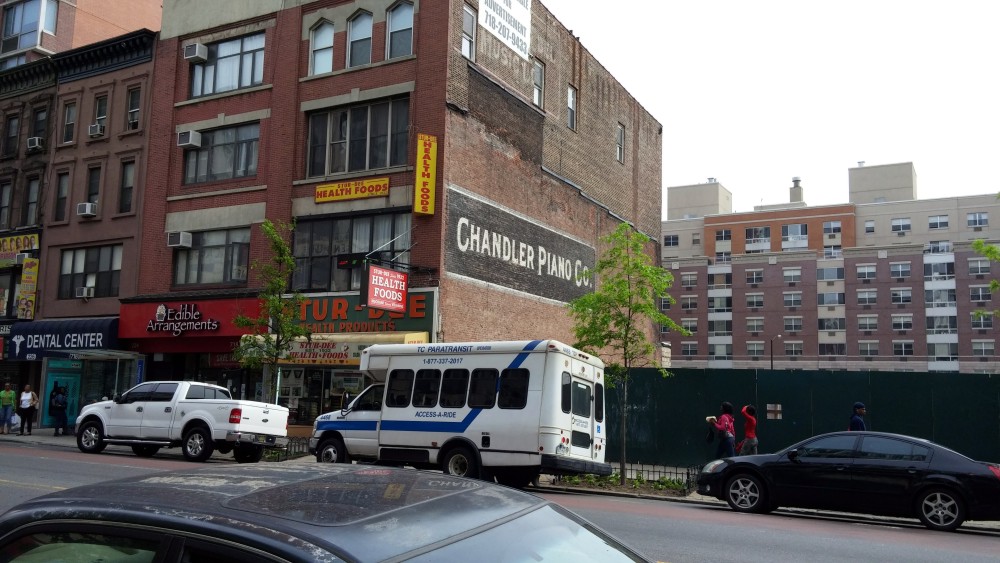
Brooklyn, one building at a time.
Built as a private home during the post–Civil War boom years, this building became famous as the home of the Chandler Piano Company.
Name: Originally a row house, then retail/apartments
Address: 222 Livingston Street
Cross Streets: Hoyt and Bond streets
Neighborhood: Downtown Brooklyn
Year Built: Probably late 1860s or early 1870s
Architectural Style: Italianate with mid-20th-century alterations
Architect: Unknown
Landmarked: No
This four-story building was the middle house in a group of seven brownstone row houses, built for a growing population in the post–Civil War boom years. The earliest detailed map of 1880 shows the group here. It was one of many groups of similar homes built along Livingston Street.
All of downtown Brooklyn’s streets began as residential, including Fulton, Livingston and Schermerhorn. It seems hard to believe today, but traces of this early development can still be found on all three, although they are fast disappearing.
Subsequent maps show that the group of houses, 216-228 Livingston, remained classified as dwellings as late as 1904. By 1916, 216-220 had been torn down and replaced by a two-story retail building. Another two-story retail building, this one much larger, had been built on the corner of Hoyt and Livingston.
Without the replacements for the row houses, we may never have had signage advertising the most prominent tenant at 222 Livingston Street: the Chandler Piano Company.
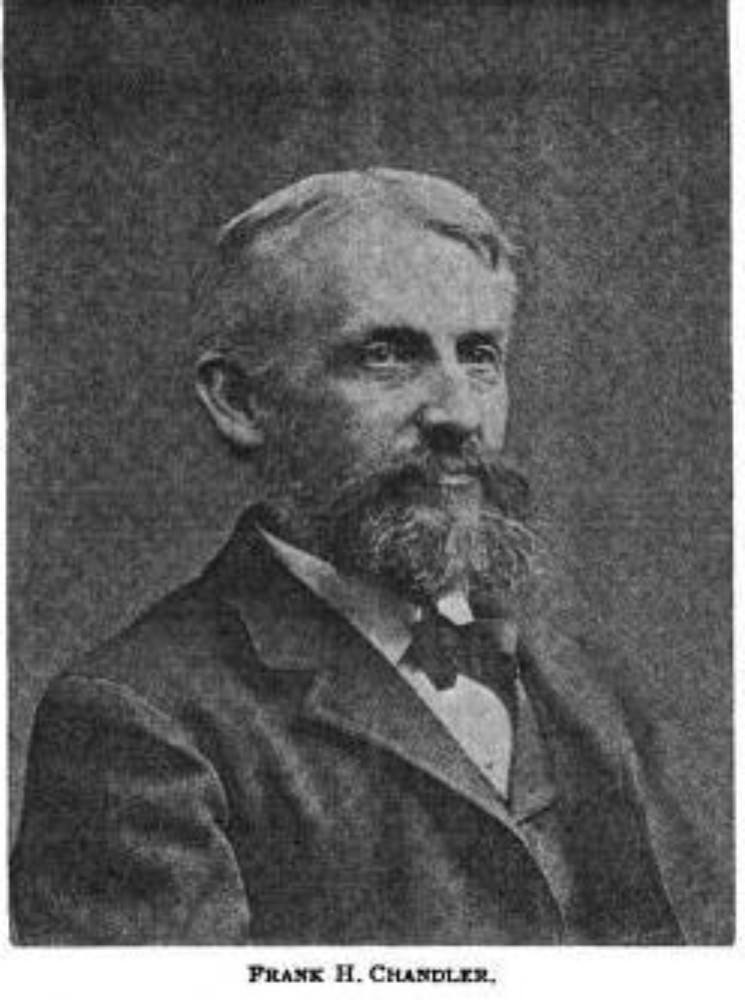
Photo via The Eagle and Brooklyn
The Chandler Piano Company
Frank H. Chandler was originally from Vermont. Born in 1836, he was one of 13 children. Young Frank had an aptitude for music, the piano in particular.
When he was 17 and still in Vermont, Frank worked for an organ builder. His advance in that trade was interrupted by the Civil War, and he enlisted with the 4th Vermont Regiment. He spent three years in the regimental band and several more years working with ordnance.
In 1867, Chandler moved to Brooklyn. Two years later he established a piano warehouse and repair center at 120 Montague Street. He was a sales rep for Chickering & Sons pianos, as well as instruments by Fischer, Ivers & Pond, Marshall & Wendel and other mid- and lower-priced piano companies.
At this time, almost every middle-class home owned a piano. Young girls in middle- and upper-class households were encouraged to learn to play hymns, carols and popular tunes, at the very least. Boys were not discouraged from learning, either. Musicianship was a valuable and popular social skill.
Pianos were sold and leased all over Brooklyn, and many of them were manufactured here. There were showrooms in various neighborhoods, but the largest were downtown.
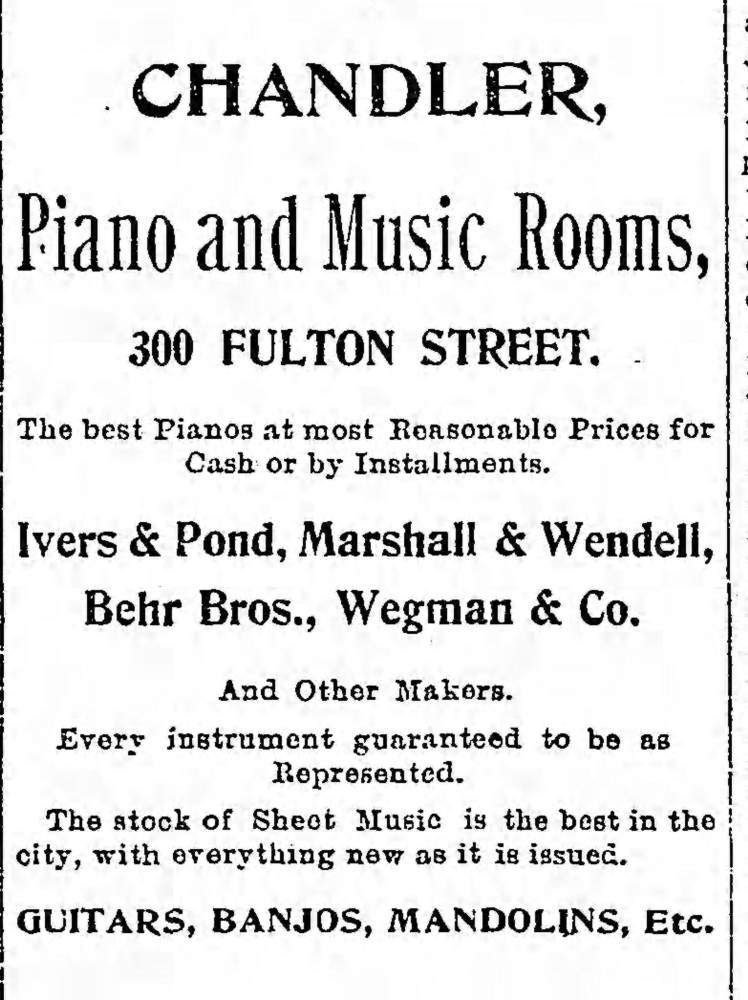
1898 Brooklyn Eagle ad
Chandler moved to 172 Montague a few years later, and by the 1890s he was on Fulton Street, in the heart of the growing shopping district. In addition to pianos, the company sold other instruments and sheet music.
The release of a new popular song to sheet music was the iTunes release of its day. Everyone wanted to be able to play and sing the songs at home, and Chandler’s store income was greatly enhanced by the sheet music collection.
In 1907, the Chandler Piano Company moved from its second address on Fulton Street to 222 Livingston Street. It seemed to have taken over the entire building, or at least the first two floors. By this time, most, if not all, of the row houses remaining on the block were converted to storefronts and second-floor businesses, with apartments above.
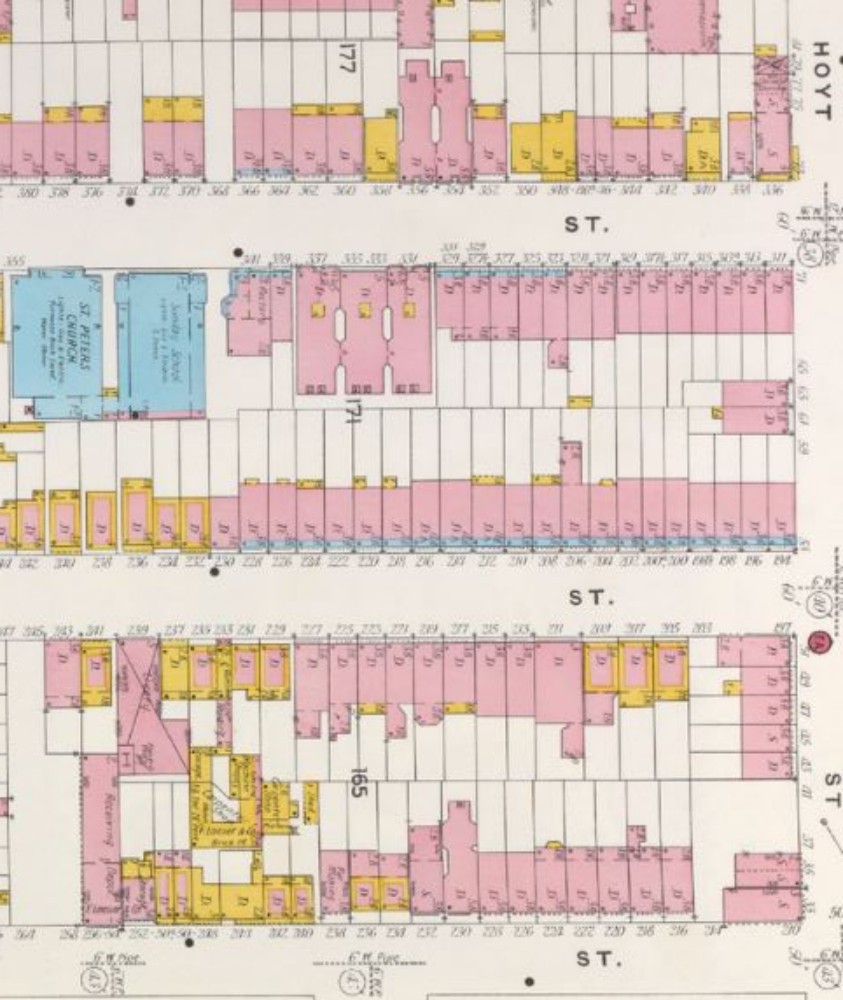
222 Livingston is on bottom of page. 1904 map, New York Public Library
The buildings to the right of this one were torn down for two-story retail buildings. There must have been a gap in years before building, as the lower Chandler sign — which looks pretty new even now — was covered up by the new construction. The upper signage has been visible ever since it was painted albeit it’s a bit faded now.
According to a wonderful photograph taken in 1925, the large corner store belonged to a notions shop. Although it’s fuzzy, it’s possible to see that 222 is still an Italianate, as is its neighbor. The fenestration on the top two floors looks original, although the third floor may be a wider picture window, as all four stories are next door at 224.
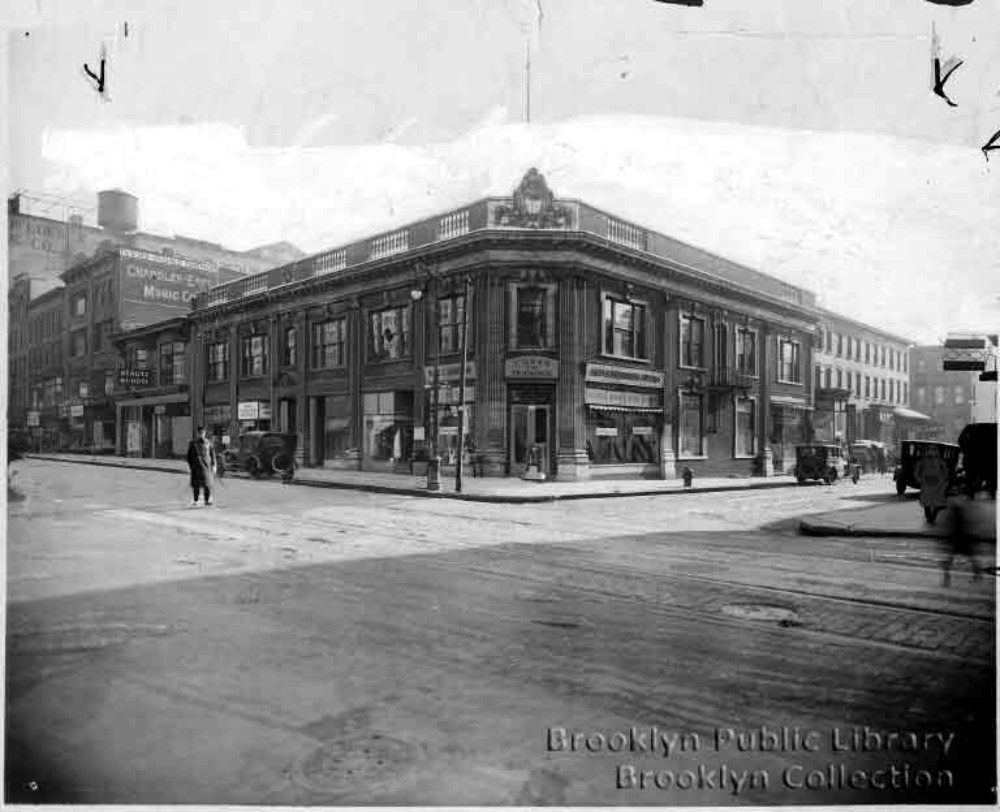
1925 photo – Brooklyn Public Library
Frank Chandler died in 1920 at his home at 46 South Oxford Street. He was 85 years old. Ironically, this man with 12 siblings only had one child, son Frank Jr., who shared his family’s interests in the arts and became the Dean of the College of Arts at the University of Cincinnati.
The business continued for many more years. In 1928, citing the need for a larger showroom, the company moved from here down the street to 166 Livingston Street. Ads for the company continue until the end of the run of the Brooklyn Eagle in 1955. How long the company stayed in business is unknown at this time.
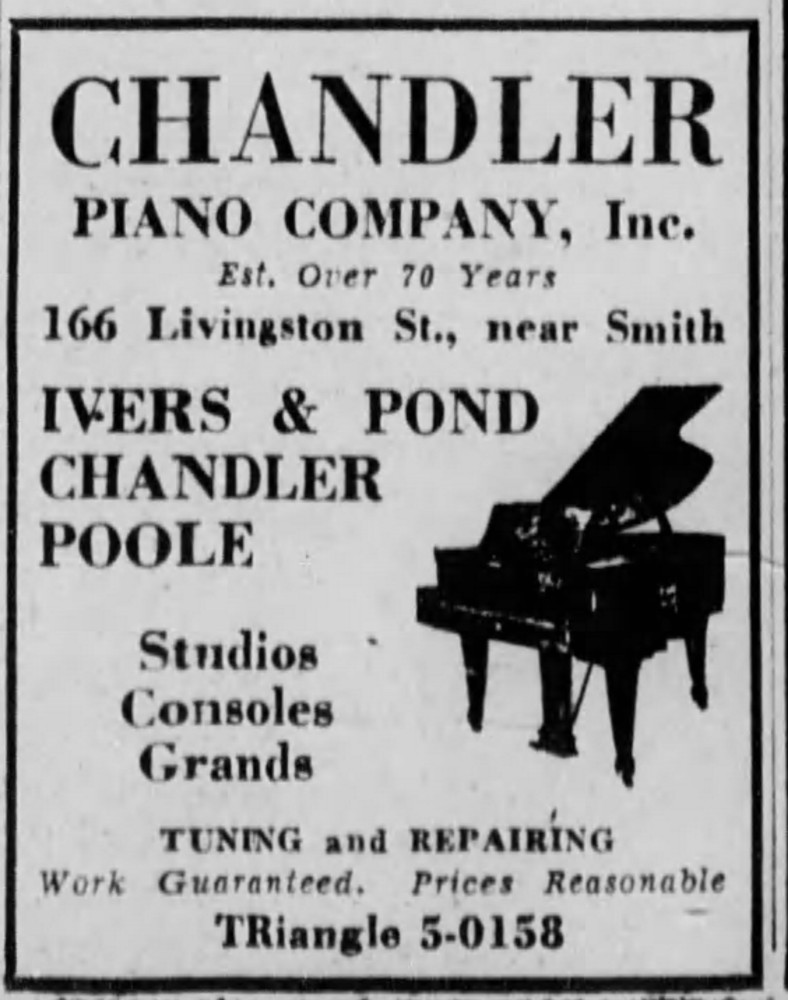
1952 Brooklyn Eagle ad
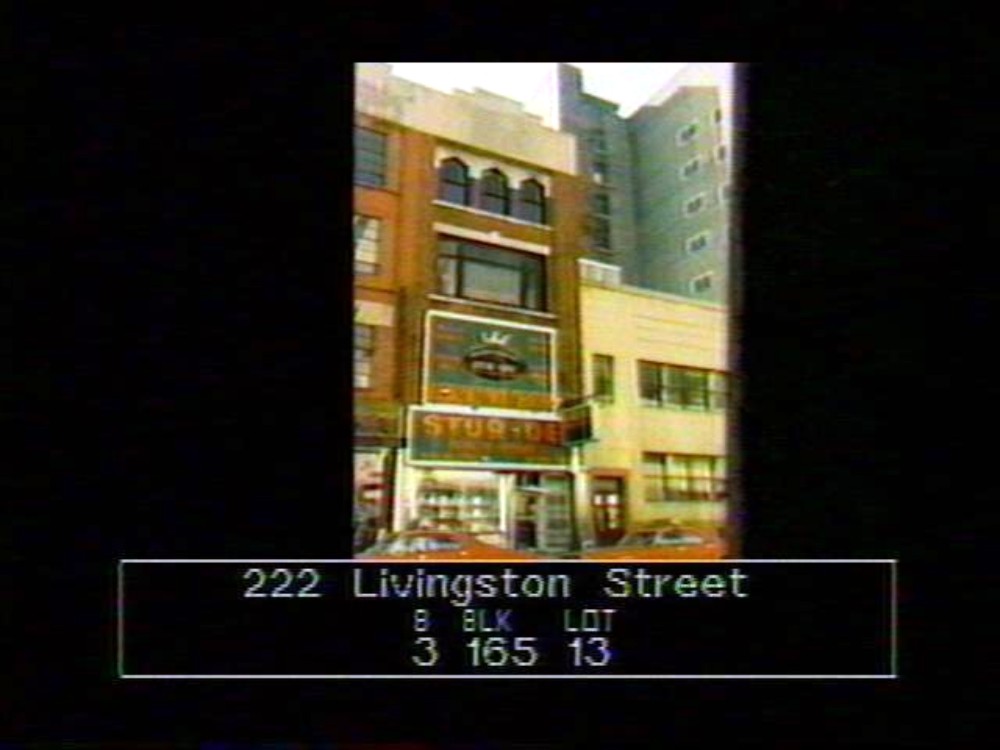
Early 1980s tax photo via Municipal Archives
At some point in the building’s mid-20th-century history, all period detail was erased, including the original brownstone cladding. Today, it houses a health food store on the ground floor, another commercial space above and two apartments on the top two floors
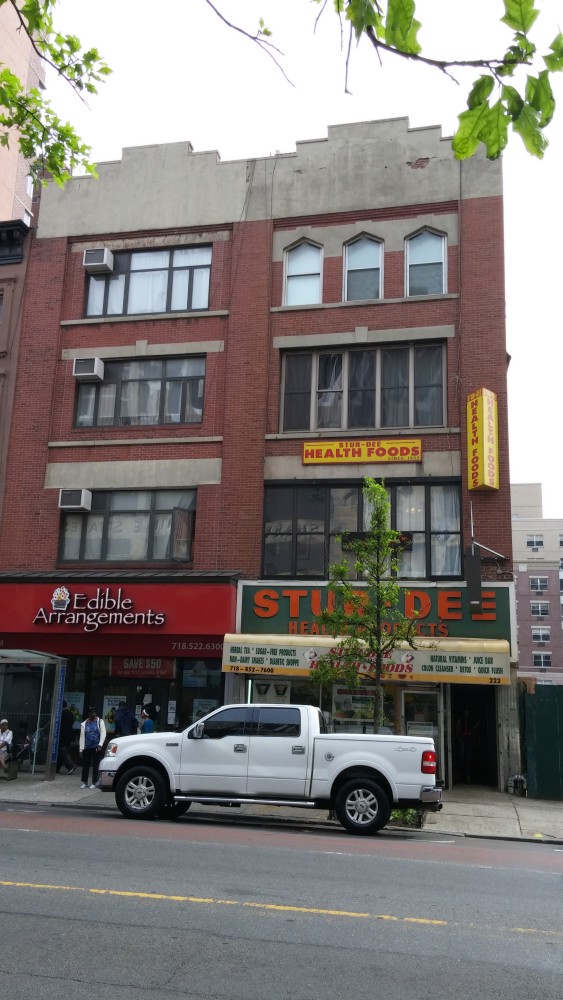
This and top photo by Suzanne Spellen
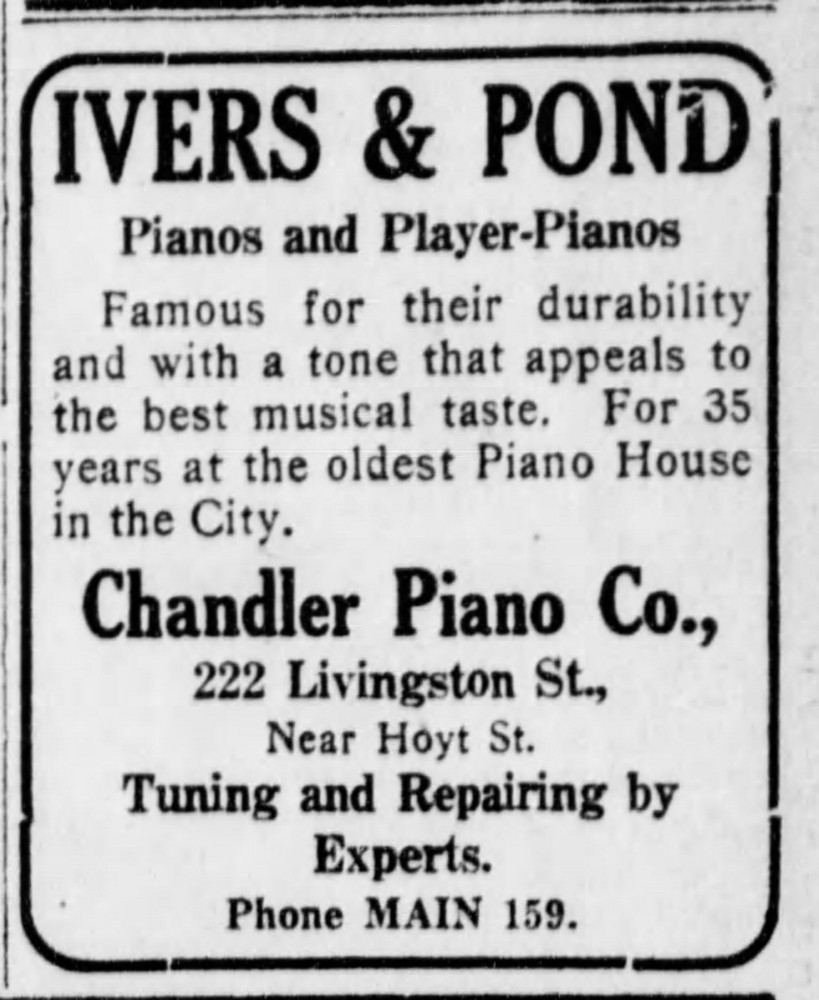
1917 Brooklyn Eagle ad
Related Stories
Building of the Day: 204 Livingston Street
Building of the Day: 305 Livingston Street
Walkabout: The Hazzards of Schermerhorn



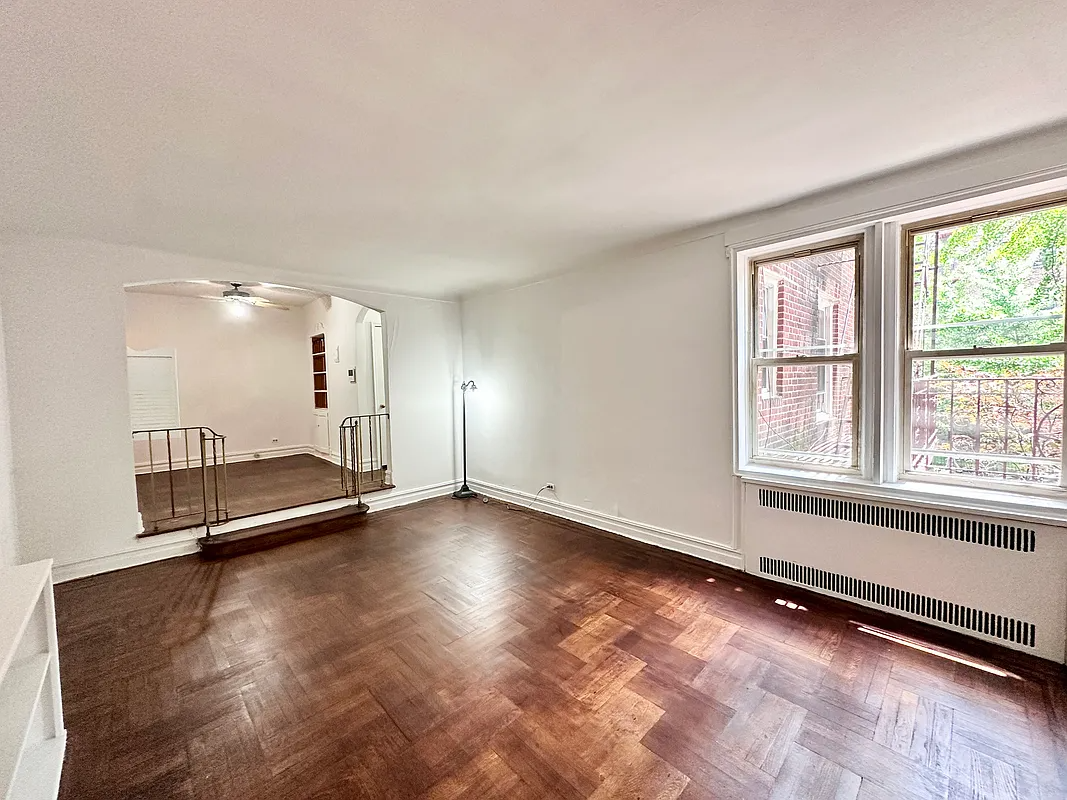

What's Your Take? Leave a Comment